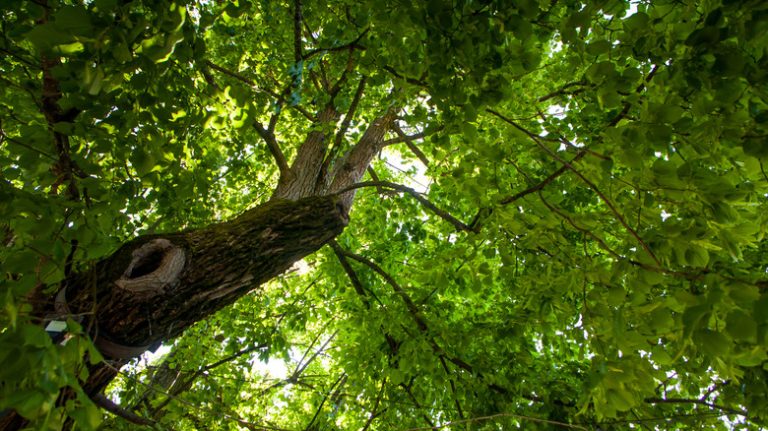Magnolia trees are a common sight in gardens and landscapes around the world. Known for their beautiful and fragrant flowers, these trees are beloved by gardeners and nature enthusiasts alike. Magnolia trees can be found in a variety of sizes and colors, ranging from petite shrubs to large, symmetrical trees.
One of the most frequently seen magnolia trees is the Southern Magnolia (Magnolia grandiflora), which is known for its long, glossy green leaves and large white flowers. Another common variety is the Chinese Magnolia (Magnolia x soulangeana), which has pink or purple flowers and gray-green leaves.
Magnolia trees grow best in full sun or partial shade and prefer well-drained loam soil. They are generally easy to care for, requiring only occasional pruning and fertilizing. However, some magnolia trees, such as the Yulan magnolia (Magnolia denudata), may require more attention to thrive in colder climates.
Magnolia trees are known for their unique attributes, including their fragrant flowers, attractive foliage, and distinctive seed pods. The flowers of magnolia trees are often large, showy, and fragrant, with colors ranging from white and pink to yellow and purple-red. The seed pods, called follicles, contain bright red seeds that are attractive to birds and other wildlife.
It is worth noting that not all magnolia trees are the same. Some varieties are deciduous, meaning they lose their leaves in the winter, while others are semi-evergreen or fully evergreen. Additionally, magnolia trees can vary in height, with some reaching up to 100 feet tall and others staying closer to the ground at around 16 feet.
In conclusion, magnolia trees are a beautiful addition to any garden or landscape. Whether you are looking for a small shrub or a towering tree, there is a magnolia tree out there that will suit your needs. With their stunning flowers, attractive foliage, and unique attributes, magnolia trees are sure to be a showstopper in any area.
Source: www.example.com
23 of the Best Magnolia Varieties
Magnolia trees are known for their stunning blooms, attractive foliage, and versatile nature. If you’re considering adding a magnolia tree to your garden, there are many different varieties to choose from. Here are 23 of the best magnolia varieties you should consider:
- Water Lily: This magnolia variety is a real showstopper with its large, water lily-shaped flowers.
- Little Gem: A popular dwarf magnolia, this variety is perfect for smaller yards or container planting.
- Jane Magnolia: With its stunning pink and purple blossoms, this magnolia tree is a real eye-catcher.
- Sieboldii: This magnolia variety is native to Japan and is known for its large, fragrant flowers.
- Loebneri Magnolia: Another Japanese variety, this magnolia produces beautiful white flowers.
- Betty Magnolia: This magnolia tree is named after its deep purple flowers and is a favorite among gardeners.
- Stellata: Also known as the star magnolia, this variety produces delicate, star-shaped blooms.
- Leonard Messel: This magnolia tree is prized for its stunning pink flowers and is a staple in many gardens.
- Frost Magnolia: This variety is known for its ability to withstand cold temperatures and is a great choice for northern climates.
- Southern Magnolia: The largest of all magnolia varieties, this evergreen tree is a true Southern icon.
When growing magnolia trees, it’s important to know that they prefer well-drained soil, preferably a loam type. They should be watered regularly, especially in the first year after planting. Magnolia trees generally require little pruning, but some varieties may need to be pruned to control their size or shape.
In addition to their beautiful blooms, magnolia trees have many other attractive attributes. Some varieties have fragrant flowers, while others have stunning foliage that turns vibrant colors in the fall. The versatile nature of magnolia trees lets you plant them as standalone specimens or in groups to create a stunning display.
Whether you’re looking for something smaller, like a dwarf magnolia, or something larger, like a Southern magnolia, there’s a magnolia variety that will suit your needs. Consider the 23 varieties mentioned above to find the perfect magnolia tree for your garden.
23 Favorite Magnolia Varieties
Magnolia trees are versatile and come in various forms. If you can’t wait for the blooming season, consider planting one of these favorite magnolia varieties. This updated list offers a range of options to choose from. Whether you prefer the large, tulip-shaped flowers of the Saucer Magnolia or the light pink blooms of the Star Magnolia, there’s a magnolia variety that suits your taste.
For those with limited space, many magnolia varieties are available in compact sizes and can be grown in containers. The long blooming season and shade tolerance make magnolias a favorite among gardeners and landscapers.
The Kobus Magnolia is adaptable and easy to grow. It can withstand strong winds and requires minimal pruning. Another popular choice is the Cucumber Tree Magnolia, which thrives in USDA zones 4-9. Its large, dark green leaves and fragrant white flowers make it a stunning addition to any garden.
The Yulan Magnolia, also known as the Chinese Magnolia, is another excellent option. Its magenta flowers bloom in early spring and emit a beautiful fragrance. With proper care, it can grow up to 18 feet tall.
If you’re looking for a magnolia variety that is more compact, consider the Felix Jury Magnolia. It features large, purple-pink flowers and can reach heights of up to 12 feet. Another compact option is the Jane Magnolia, which produces beautiful purple-pink flowers.
For those in warmer climates, the Wild Magnolia is an excellent choice. It can tolerate hotter temperatures and is more resistant to diseases. The Sargentiana Magnolia, on the other hand, prefers cooler climates and partial shade.
The Genie Magnolia is a smaller shrub-like species that can fit well in small gardens or near walkways. It produces deep purple, tulip-shaped flowers and can grow up to 6 feet tall.
No matter which magnolia variety you choose, be sure to plant it in well-draining soil and water it regularly. Magnolias are generally low-maintenance, but they benefit from regular watering, especially during dry spells. Consider your local climate and humidity levels when caring for your magnolia tree.
Seeing a magnolia tree in full bloom is an iconic sight that brings joy to many. The flowers are incredibly fragrant and beautiful, making them a popular choice for both residential and commercial plantings.
If you’re anise seed lover, you may also appreciate the Magnolia Virginiana. This unique magnolia variety is known for its fragrant seed cones that resemble star anise.
So whether you’re looking for a petite magnolia variety for your patio or a large magnolia tree for your yard, there’s a magnolia variety that will suit your needs. Explore the options above and start planning your magnolia garden today!
1 Anise
Anise magnolias are a popular choice for many gardeners, and it’s no wonder why. These iconic trees can be found in many places, and their distinctive leaves are a wonder to behold. Anise magnolias are deciduous in zones 5 to 11, and they provide a stunning display in the fall when their leaves turn a vibrant yellow.
One popular variety of anise magnolia is the Sweetbay Magnolia, named for its creamy-white flowers which give off a sweet aroma. This versatile tree can grow up to 60 feet tall and has a shrubby habit, making it a great choice for adding interest to your landscape. The Sweetbay Magnolia is also a favorite among bird enthusiasts, as it attracts a variety of bird species with its nectar-rich flowers and nutritious stamens.
Another commonly seen anise magnolia is the Chinese Magnolia, which is famous for its showy pink flowers that bloom in early spring. This deciduous tree thrives in zones 5 to 9 and is particularly loved for the delicate fragrance it emits. The Chinese Magnolia is a real showstopper and is sure to draw attention to any garden.
Anise magnolias are generally easy to care for, though they do have some specific needs. They prefer a spot with full sun or partial shade and well-drained soil. Anise magnolias are also relatively drought-tolerant once established, but they will benefit from regular watering, especially in the first few years after planting.
In terms of maintenance, anise magnolias are generally pest and disease-resistant. However, they may occasionally suffer from issues such as mold or rot. It’s best to keep an eye out for any signs of trouble and take appropriate action if necessary. Pruning is not frequently needed for anise magnolias, but if desired, it should be done in late winter or early spring.
In conclusion, anise magnolias are a versatile and beautiful addition to any garden. Whether you choose a Sweetbay Magnolia or a Chinese Magnolia, you’re sure to enjoy the iconic flowers, distinctive leaves, and lovely fragrance these trees provide. With their massive blooms and thriving habit, anise magnolias are truly a sight to behold.
2 Ann
2 Ann is a variety of magnolia tree that is known for its beautiful and unique tulip-shaped flowers. It is a shrub or small tree that can grow to various sizes, depending on the conditions it is grown in.
2 Ann is native to places with high humidity and mild winters, so it needs to be cared for carefully in colder climates. It prefers well-drained soil and should be protected from strong winds.
The flowers of 2 Ann are a vibrant magenta color and can be up to 16 to 22 centimeters in diameter. The blossoms have thick outer petals and many stamens in the center. The leaves of 2 Ann are dark green and glossy, making them a favorite in many garden settings.
Like other magnolia trees in the Magnoliaceae family, 2 Ann is known for its hardy nature and ability to withstand different growing conditions. It is a versatile plant that can be used as a focal point in a garden or as part of a larger group of trees.
In addition to its beauty, 2 Ann is also a favorite of butterflies, who are attracted to its nectar-rich flowers. The dense branches and thick leaves of the tree provide shelter and a source of food for butterflies and other wildlife.
To promote the health and growth of 2 Ann, it is important to provide it with the proper care. It should be watered regularly, especially during dry periods, and fertilized with a balanced fertilizer. Pruning can help shape the tree and remove any dead or diseased branches.
If you are considering growing a 2 Ann in your garden, make sure to choose a well-drained location with plenty of space for the tree to grow. The tree produces flowers in late spring or early summer, which later turn into cone-like seed pods. In colder climates, the tree may require additional protection during the winter months.
2 Ann is a beautiful and resilient magnolia tree that brings a touch of nature’s beauty to any garden. Whether you are a seasoned gardener or a beginner, this variety is a great choice for adding color and elegance to your outdoor space.



